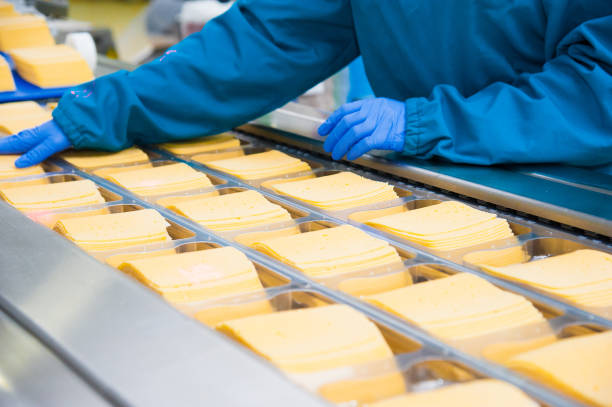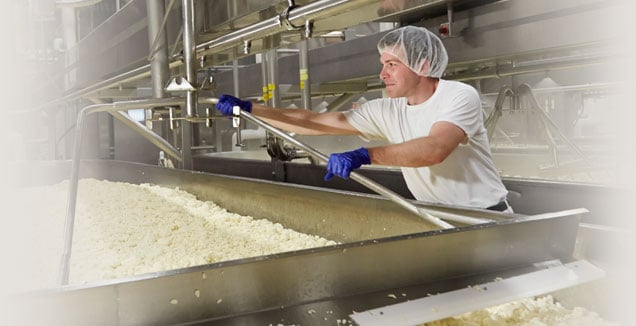Discovering the Art of Cheese Production: Techniques, Processes, and Technologies in the Dairy Market
The expedition of cheese manufacturing incorporates a varied array of techniques and processes that show both historic practices and contemporary developments within the milk industry. By checking out the intricate art of fermentation, aging, and modern production methods, one gains understanding right into how artisans and large manufacturers alike adapt to advancing customer preferences and sustainability challenges. As we think about the implications of these advancements, it becomes necessary to question exactly how they will certainly form the future landscape of cheese and its duty in our diet regimens and cooking practices.
Background of Cheese Making
Mapping its beginnings to old human beings, the background of cheese making reveals a rich tapestry of social and technological advancement. Proof suggests that cheese production go back over 7,000 years, with archaeological findings from areas such as Mesopotamia and the Indus Valley showcasing very early dairy products methods. These societies made use of milk from domesticated pets, and with all-natural processes of fermentation and coagulation, they created fundamental types of cheese.
As human beings proceeded, the art of cheese making came to be more fine-tuned. The ancient Egyptians and Greeks recorded their methods, that included a selection of milk sources and diverse strategies for aging and flavoring cheese. The Romans additionally sophisticated cheese production, exporting their expertise throughout Europe, which resulted in regional adjustments and distinct selections.
The Middle Ages experienced the establishment of abbeys as centers of cheese production, where monks created distinctive recipes that showed neighborhood preferences and available resources. Throughout the centuries, cheese production has evolved, affected by factors such as location, climate, and social methods. This abundant history not just shows the ingenuity of early societies however also lays the structure for the varied cheese ranges delighted in today throughout the globe.
Typical Cheese Manufacturing Strategies
Traditional cheese production techniques include a selection of time-honored approaches that have been given via generations. These techniques, frequently region-specific, mirror the distinct social heritage related to cheese-making. The procedure normally begins with sourcing high-grade milk, which can differ in kind depending on the desired cheese.
Coagulation is achieved via the enhancement of rennet and often an acid, resulting in the formation of curds. The curds are then reduced and delicately stirred, enabling whey to divide. This initial coagulation phase is essential, as it influences the appearance and moisture web content of the end product.

Fermentation and Aging Processes
Fermentation and aging procedures are integral to the development of cheese, happening after the first coagulation and pressing phases. During fermentation, details bacterial societies are presented to the curds, promoting the conversion of lactose informative post right into lactic acid. This level of acidity not just aids in curd conservation important site but likewise adds to the taste account and texture of the final item.
As the cheese ages, biochemical reactions proceed to take place, influencing its preference, fragrance, and texture. Different cheeses call for differing aging durations, which can vary from a couple of weeks to a number of years, leading to distinct attributes.
In addition, the existence of molds or yeasts on celebrity surface can better improve taste complexity. As an example, blue cheeses depend on specific mold cultures to develop their signature taste accounts. Overall, both fermentation and aging are essential in specifying the individuality of cheeses, permitting artisans to create a varied array of items that satisfy a vast array of palates.
Modern Innovations in Dairy Products Manufacturing
Developments in dairy products production have actually changed the cheese-making procedure, improving efficiency and item top quality. Technological developments, such as automated milking systems and accuracy fermentation strategies, have structured procedures and enhanced consistency in raw milk high quality. These systems minimize labor costs and enhance pet welfare by permitting even more comfortable and reliable milking techniques.
In addition, the unification of information analytics and IoT (Internet of Points) devices has actually made it possible for milk producers to monitor different specifications, such as temperature level and moisture, in real-time. cheese shop melbourne. This capacity guarantees optimum problems throughout the cheese-making process, bring about a higher top quality final product
In addition, developments in pasteurization approaches, including high-temperature short-time (HTST) pasteurization, have not just enhanced food safety and security however additionally preserved the delicate tastes and nutrients fundamental in milk.
Lasting practices are likewise obtaining traction, with developments in waste administration and renewable resource use. Several manufacturers are currently utilizing that site biogas from dairy products waste, promoting environmental stewardship while all at once lowering operational expenses.
These modern-day developments jointly add to a much more reliable, sustainable, and high-grade cheese production procedure, establishing new requirements in the milk industry.
Future Fads in Cheese Industry
As the cheese sector continues to progress, arising fads are improving manufacturing, usage, and advertising and marketing strategies. One considerable fad is the growing need for artisanal and specialized cheeses, driven by customers looking for special tastes and top quality components. This shift is motivating manufacturers to embrace traditional techniques while integrating modern innovation for enhanced top quality control.
Sustainability remains at the forefront of consumer choices, triggering producers to explore eco-friendly techniques, such as minimizing water usage, maximizing energy consumption, and making use of eco-friendly packaging products. Furthermore, developments in plant-based cheese choices are increasing market opportunities, accommodating the raising number of vegan and lactose-intolerant customers.
Furthermore, electronic advertising and shopping are transforming just how cheese is marketed and sold, making it possible for producers to attach straight with consumers and customize their offerings to certain demographics. Subscription solutions and on-line platforms are ending up being popular networks for cheese distribution, enhancing availability and benefit.
Lastly, health-conscious trends are affecting cheese formulations, with producers developing lower-fat, lower-sodium, and nutrient-enriched options to meet consumer needs. As these patterns remain to unravel, the cheese market is likely to witness a dynamic improvement that straightens with modern-day customer values and preferences.

Final Thought
The expedition of cheese production discloses a complex interplay of classic techniques and modern innovations. As the dairy sector welcomes health-conscious trends and eco-friendly methods, the future of cheese manufacturing guarantees ongoing growth and advancement, ensuring its enduring significance in cooking society.
Comments on “Cheese Store Melbourne: Your Go-To Destination for All Things Cheese”